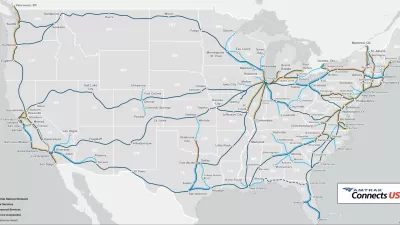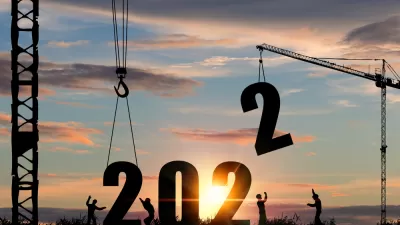Part one of two of Planetizen's review of 2021—re-assessing failed predictions and daylighting the biggest planning stories of the year.
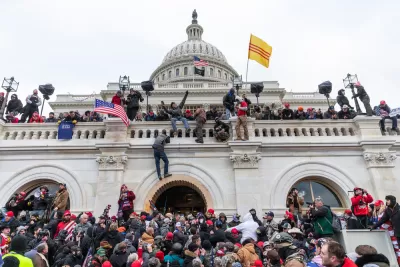
It's astounding how fleeting time has become during the pandemic. The time warp experience is universal enough to enter the academic literature. A survey of 600 people living in the U.K. —published in July 2020 in the journal PLoS One and picked up by news outlets all over the world, including the Los Angeles Times—found only 20 percent of respondents thought time was passing at a typical pace in the first months of the pandemic. About half the remainder experienced time during lockdown at a much faster pace, the other half slower.
Living carefully during this pandemic can make it seem like every day is exactly the same. Reemerging into public every few days, weeks, or even months is a shock, but the time warp only represents the first layer of effect—when placed in context of world events and the changes on local streets, the time warp achieves an unprecedented disconnect between private and public life.
If just comprehending recent events were the sole task of the planning profession, it would be hard enough to navigate the time warp. But planners are called to a much more daunting task: responding to the past by anticipating the future.
Revisiting Planetizen's "Planning Trends to Watch in 2021"
In January 2021, the "Planning Trends to Watch in 2021" article predicted that the following concepts would come to define the practices and the discourse of planning in the United States and the world for the year to come: 1) Equity and Disparate Impact, 2) Evictions and Foreclosures, 3) Investing in Automobile-Dependence, and 4) Post-Population Growth. Now that the year is over, let's evaluate whether those predictions came true.
Equity and Disparate Impact
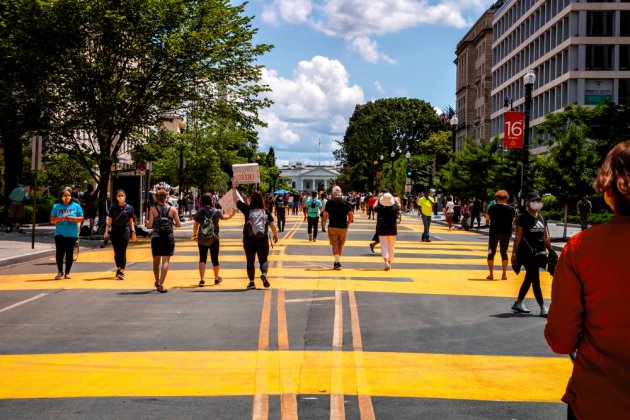
Equity and disparate impact didn't completely vanish from conversations about planning this year, but after a year of a public discourse dominated by Black Lives Matter protests and stark disparate outcomes in the public health outcomes of the Covid-19 pandemic, the equity conversation seemed relatively muted in 2021. Given the peak equity discourse of 2020, the comparison probably isn't fair. A cursory scan of the "Equity" tag on Planetizen reveals no shortage of examples.
In a year when culture war somehow found new ground to till, the conversation about equity probably had its most public moment in a controversy that followed an appearance by Transportation Secretary Pete Buttigieg describing a passage from Robert Caro's The Power Broker that ostensibly reveals Robert Moses's racist intentions (while raising questions about Caro's reportage). The intention behind Secretary's Buttigieg remarks, however, would indicate a massive sea change toward integrating equity in transportation planning by halting and reversing the discriminatory practices of 20th century transportation planning. The advanced guard of the movement is a law proposed recently by California Assemblymember Cristina Garcia (D-Bell Gardens) that, according to the Los Angeles Times, would prohibit California from "funding or permitting highway projects in areas with high rates of pollution and poverty and where residents have suffered negative health effects from living near freeways."
Just like in 2020, ideas about equitable planning and disparate impact seem poised to remake the field of planning, but it's still unclear if words will be translated into actions. For optimism on this subject, look to a recent study published by the Urban Institute about how transit agencies have been using equity as a key consideration when responding to the constraints of the pandemic. In Denver, for example, the number of low-income transit riders has increased during the pandemic.
On the other hand, an exposé published in November by the Los Angeles Times calls attention to the remaining gap between good intentions and disparate impacts. Despite the renewed effort to center equity in transportation infrastructure projects, highway construction and expansion still disproportionately impact communities of color. Times investigation produces damning evidence from Houston to Tampa to Mississippi to California, and aggregated data to quantify the sum of the damage.
For one final kick in the butt on the way out of 2021, research published in December 2021 details how much damage pollution continues to do on low-income communities and people of color in the United States—despite the progress and intentions of the 19990 Clean Air Act and despite the best intentions of many planners, politicians, and the public.
Evictions and Foreclosures
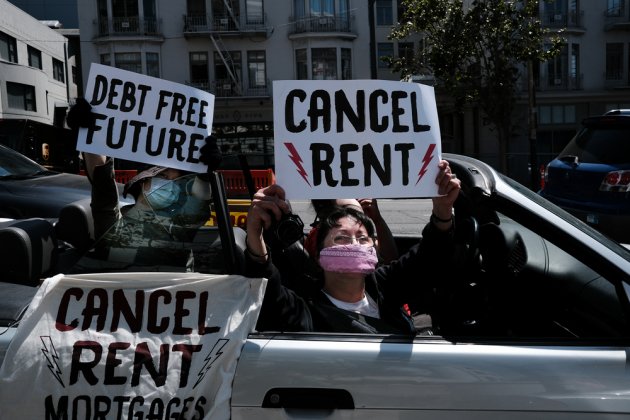
It might be tempting to look back at 2021 and say that the ad hoc social safety net, cobbled together with a patchwork of eviction moratoria and rent relief programs prevented the catastrophic eviction wave that many feared would be an inevitable outcome of the economic disruption caused by the pandemic, despite inconsistent and unreliable application around the country.
We're in a fog when it comes to the housing market effects of the pandemic for the most vulnerable residents of U.S. communities. The research we've seen on the subject—expected evictions, actual evictions, increased homelessness, and rent debt—has always included significant caveats about the limitations of the data fueling the estimates. What seems like an accomplishment could be a mirage. What seems like a tragedy of genocidal proportions could be an undercount.
When the final history of housing stress during the pandemic is written, a few objectively massive developments will benchmark the assessment of 2021. In August, the Supreme Court struck down the federal eviction moratorium instituted by the U.S. Centers for Disease Control and Prevention (CDC). In November, St. Paul voters approved one of the most aggressive rent control ordinances in the country. Congress approved the Infrastructure Investment and Jobs Act, but the Build Back Better Act, which includes unprecedented funding for housing and social safety net programs, seems to have fallen one vote short in the U.S. Senate.
Investing in Automobile-Dependence
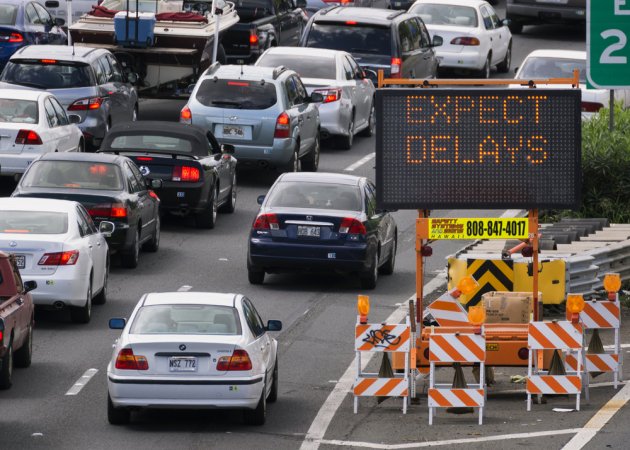
The economic stimulus programs of the Great Recession occurred simultaneously with a groundswell of support for climate change mitigation measures, thanks to the popularity of Al Gore's documentary An Inconvenient Truth, released in 2006.
To say that the American Recovery and Reinvestment Act and other legislative activities of the federal government during the first years of the Obama administration failed to move the needle against climate change and carbon emissions would be tragically understating the consequences of the failure. Fast forward to 2021, and the first year of the Biden administration seemed poised to finally deliver a massive spending package that would finally shift the future of U.S. transportation and land use planning away from its car-centric abuses. Over the course of the year, the Biden administration's "Build Back Better" campaign promises stagnated and fragmented before achieving a partial victory that retreated significantly from the initial potential to change the planning game.
Yes, the approval of the $1.2 trillion Infrastructure Investment and Jobs Act (IIJA) will serve as a historic benchmark and an example for all federal legislation for decades to come. The IIJA provides record amounts of funding for public transit and other emissions-reducing alternatives to sprawl and freeways. But, the IIJA also includes record amounts of funding for freeways and automobile infrastructure and places all bets on electric cars as a silver bullet for climate change—despite repeated warnings that electric cars won't be enough to save the planet from the worst climate change ravages.
Guardrails intended to protect new infrastructure funding from the proclivities of state departments of transportation for building more freeways at all costs (and leaving public transit and active transportation holding the short end of the stick) were removed with the demise of the INVEST in America Act during negotiations leading up to final approval.
The failure of the Build Back Better Act represents another setback for a progressive legislative agenda for planning at the federal level. The Build Back Better Act would have delivered record levels of funding for place-based initiatives and housing programs (although with much less of the latter than originally proposed). One of the provisions of the Build Back Better bill, an APA-endorsed section of the bill called the Unlocking Possibilities Program (the Biden administration's version of previous legislation called the Housing Supply and Affordability Act) that would have provided support for local planning departments to undo the zoning restrictions that have enabled single-family, automobile-dependent sprawl.
In an episode that serves as proof of the potential for the IIJA to end up inducing even more greenhouse gas emissions and automobile dependence, Federal Highway Administration Deputy Administrator Stephanie Pollack sent a memo on December 17 directing "staff to encourage state and local governments to consider fixing existing roads before building new ones." The memo might as well ask staff to put the genie back in the bottle while they're at it.
Existing Building Stock as Affordable Housing Supply
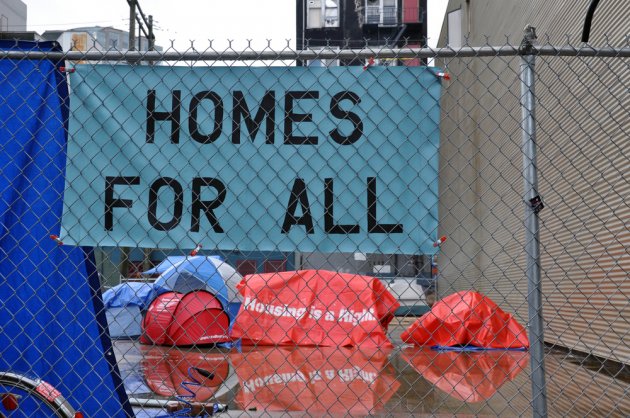
The momentum for adaptive reuse of existing commercial and hotel building stock seems to have vanished—at least in terms of the kind of targeted policy making that was taking place at the end of 2020 and the beginning of 2021. Still, adaptive reuse is likely to hang around as a common practice as the trends launched by the pandemic linger—work from home arrangements vacating office buildings and central business districts while housing prices in almost every corner of the country continue to climb out of reach of more middle class Americans.
The idea of repurposing underused and vacant commercial buildings is hanging around, though it's not always housing being created out of the ashes of pre-pandemic working arrangements—sometimes it's Amazon or other e-commerce companies filling that space. While some media outlets wonder if adaptive reuse could dominate the apartment and condo development industry in urban markets, there's also evidence that the trend is well underway. According to an October report by RentCafe, a record 20,100 apartment conversions were on track to be completed in 2021. Of that total, 41% of the new apartments were created in former office buildings. While Philadelphia and Washington, D.C. converted the most units in 2020 and 2021, Los Angeles and Cleveland have the most adaptive reuse projects lined up beginning in 2022, according to the report.
Post-Population Growth
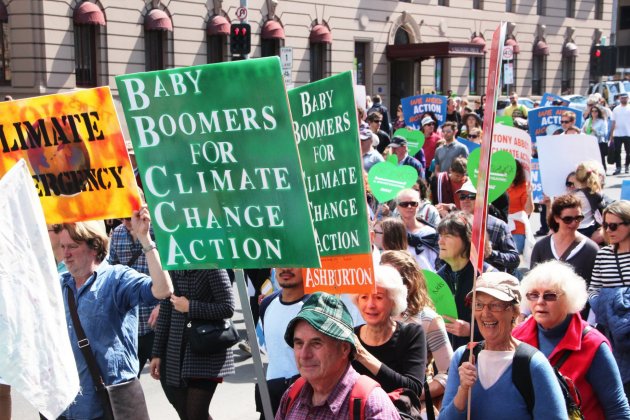
One fact of life that just doesn't seem to be gaining traction in the public awareness is the effect of the pandemic on reproduction. All Americans have been granted a glimpse into how population decline will manifest in the coming decades—the labor shortages that have reduced capacity for essential jobs like teachers, bus drivers, healthcare workers, and more.
In 2021, the Census 2020 data drop (delivered late because of the pandemic and the Trump administration's negligence) provided an opportunity to talk about population trends with a cachet that only a decennial chronology can impart. After the 2020 Census finally dropped, the news tended to focus on one screaming headline: the U.S. population was growing slower than it had in decades. [Update: The U.S. Census Bureau on December 21 published data that show the nation's population growing slower than it has since the nation's founding.]
Despite the Census attention, this story has been lurking in the background more than dominating the discourse. But here's the brass tacks: Population was expected to start declining in the United States and the entire world by the middle of the century, but population decline has been accelerating in the United States during the pandemic, thanks to lower numbers of immigrants and lower birth rates. The U.S. Census reported as recently as September that birth rates have been lower than expected throughout the pandemic. The New York Times picked up the news in May 2021 and again in August 2021, but it's a stretch to say that these trends have pierced the collective consciousness, though they will have consequences decades onto the horizon.
Whether planners or anyone else realize it yet, the scarcities born of population decline will be constant in the remainder of the time on earth of the largest, most diverse generation in U.S. history.
This is part one of the Planetizen 2021 "Year in Review" post. Check back in a few days for part two, and again a few days later for a "Top Trends to Watch in 2022" post.

Planetizen Federal Action Tracker
A weekly monitor of how Trump’s orders and actions are impacting planners and planning in America.

Restaurant Patios Were a Pandemic Win — Why Were They so Hard to Keep?
Social distancing requirements and changes in travel patterns prompted cities to pilot new uses for street and sidewalk space. Then it got complicated.

Map: Where Senate Republicans Want to Sell Your Public Lands
For public land advocates, the Senate Republicans’ proposal to sell millions of acres of public land in the West is “the biggest fight of their careers.”

Maui's Vacation Rental Debate Turns Ugly
Verbal attacks, misinformation campaigns and fistfights plague a high-stakes debate to convert thousands of vacation rentals into long-term housing.

San Francisco Suspends Traffic Calming Amidst Record Deaths
Citing “a challenging fiscal landscape,” the city will cease the program on the heels of 42 traffic deaths, including 24 pedestrians.

California Homeless Arrests, Citations Spike After Ruling
An investigation reveals that anti-homeless actions increased up to 500% after Grants Pass v. Johnson — even in cities claiming no policy change.
Urban Design for Planners 1: Software Tools
This six-course series explores essential urban design concepts using open source software and equips planners with the tools they need to participate fully in the urban design process.
Planning for Universal Design
Learn the tools for implementing Universal Design in planning regulations.
Heyer Gruel & Associates PA
JM Goldson LLC
Custer County Colorado
City of Camden Redevelopment Agency
City of Astoria
Transportation Research & Education Center (TREC) at Portland State University
Camden Redevelopment Agency
City of Claremont
Municipality of Princeton (NJ)



























